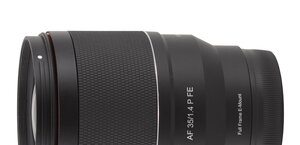Tamron 16-300 mm f/3.5-6.3 Di II VC PZD MACRO
11. Summary
- very universal focal lengths range,
- good image quality in the frame centre,
- proper correction of the longitudinal chromatic aberration,
- slight chromatic aberration in a range from 16 to 100 mm,
- sensible correction of coma in 50–300 mm range,
- moderate vignetting at the longer end of focal range,
- good autofocus performance,
- efficient image stabilization.
Cons:
- weak image quality at the maximum relative aperture and on the edge of the frame for all focal lengths
- huge level of lateral chromatic aberration in the focal range from 200 to 300 mm,
- high distortion at wide angles of view.
I would never buy an 18-200 mm megazoom. I don’t even mean here their weak performance because the latest launches in that segment showed that you can find several good devices, fully able to provide images of decent quality. It’s more about the fact that the 18 mm focal length coupled with an APS-C/DX sensor is not as wide as you would think; in fact it proves to be too narrow for many holiday-landscape uses. What’s more, the 200 mm focal length also often proves to be a tad too little – you can’t take a good shot of a bird or a decent photo of a flying plane, even your average sunset or the face of the Moon will be looking quite bland…
Please Support UsIf you enjoy our reviews and articles, and you want us to continue our work please, support our website by donating through PayPal. The funds are going to be used for paying our editorial team, renting servers, and equipping our testing studio; only that way we will be able to continue providing you interesting content for free. |
- - - - - - - - - - - - - - - - - - - - - - - - - - - - - - - - - - - - - - - - - - - - - - - -
The situation changes with 16-300 mm parameters. That kind of lens is really able to provide a wide angle of view and its telephoto end is sensible as well – all of that in one device, without the necessity of changing lenses during a trip or in difficult outdoor conditions. I am pretty sure those features might be tempting to many amateur photographers.
Will the Tamron 16-300 mm live up to expectations of its buyers? It is difficult to assess that lens properly as it has no direct rivals but it seems a sensible choice anyway. Despite applying so difficult parameters the constructors managed to guarantee good image quality in the frame centre across the whole focal range, no matter what aperture you employ. Of course the lens has its weak points: the image quality on the edge of the frame at 50 mm is really weak and the huge level of the lateral chromatic aberration at 200-300 mm focal lengths can make your head hurt. Still it would be foolish to expect miracles from a zoom lens, wouldn’t it?
Even with those flaws, if you take into account the target audience of that device, it still remains an interesting option. It will perform well on every trip, it will be a great lens for just walking around. After all holiday snaps are not supposed to bowl you over with their outstanding resolution; most likely they will be shown to your closest family and/or friends, often displayed on a Full HD or 4K tv set; if they are printed then a format not bigger than A4 will be used. We are sure the Tamron 16-300 mm will be a great tool for such usages.






